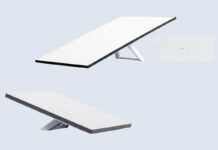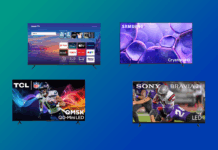
The release of several ultra-portable PCs over the past few months has taken the laptop form factor to new extremes. The new Apple MacBook, Dell’s XPS 13 and Lenovo Yoga 3 are so svelte, they actually weigh less than the battery alone from a late 1980s vintage Macintosh Portable. I’ve put together a timeline showing some of the key advances in technology that have helped us move from a 10 kg PC in a suitcase to a device weighing 1 kg or less.
The First Portable PCs
As with any “first” there is room for argument about the first portable PC. The Osborne 1 is widely believed to be the first commercially successful device in this category. Released in 1981, it weighed 10.7 kg and sported a 5-inch monochrome monitor. IBM got into the game in 1984 with its own portable PC that ran DOS, featured a 9-inch monochrome display, a detachable keyboard and a floppy disk drive. The IBM 5155 weighed 13.6 kg.
These early portable PCs were essentially desktop PCs crammed into a portable carrying unit. They had to squeeze a CRT monitor (remember those bulky tube TVs and computer display?) lead acid batteries, standard mechanical keyboards and a motherboard designed for a desktop PC into a “portable” case.
They were so heavy, you wouldn’t be able bring most of them on today’s airplanes as carry-on luggage.
LCD Displays, Hard Drives, Built-in Keyboards and NiCad Battery Packs
The first real revolution in laptops saw the devices shedding some of their desktop PC heritage.
That Macintosh Portable from 1989 incorporated a built-in keyboard (with a trackball tacking the place of a mouse), a 640 x 400 pixel monochrome LCD display and the option for a hard drive and adding a modem. The space-saving technology drove the price up, but brought the weight of this mobile PC down to just over 7 kg.
At the same time, Compaq released the LTE, a mini PC small enough that it helped to inspire the “laptop” label. Equipped with an LCD display and a floppy drive, the first version of this laptop weighed just 3 kg. A big part of its weight savings was the move to ditch the heavy lead acid battery (the same kind used in cars) for nickel-cadmium—or NiCad—batteries.
Early 1990s
This time was a renaissance for laptops. Manufacturers were shrinking motherboards down to more compact sizes, displays were improving, design was becoming important—not just for visual appeal, but in helping to pack more features into a portable device. Businesses were buying laptops and they were beginning to hit the consumer market as well.
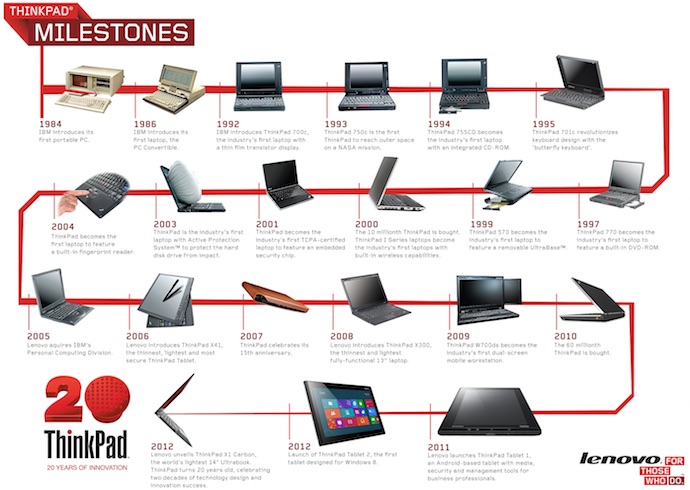
This is the time when the first IBM ThinkPad hit the market and Apple released the PowerBook Series. My first laptop was a PowerBook 100, a Sony-designed 2.3 kg grey laptop with a 9-inch 640 x 400 monochrome display and 3-4 hour battery life. I loved that laptop because the display could be read outdoors and I could extend battery life considerably by loading both operating system and Microsoft Word into RAM.
MacBook Air and UltraBooks
Throughout the 1990s and 2000s, laptop design continued to improve. Mobile-friendly CPUs that conserved power and offered built-in graphics became the norm, colour displays gained in resolution and new battery technology such Lithium-ion saved more space and weight. There was a brief move toward Netbooks—basically mini laptops that cut size and cost at the expense of performance and usability—but the next big revolution started in 2008, when Apple released the MacBook Air.
The first version was underpowered and offered less than impressive battery life (I know, I own one), but continued improvement turned this into the leader of the ultraportable laptop market and helped to kick off the popularity of Ultrabooks.
Among the space and weight-saving technological innovations introduced to the mainstream by the MacBook Air, and later adopted by many Ultrabooks:
- Unibody machined aluminum body
- RAM soldered to the motherboard
- Elimination of CD ROM/optical drives
- Elimination of ethernet port
- Mechanical HDD replaced by solid state SSD
- Non user-replaceable battery designed to take up any available space within the laptop
Today: Ultraportables and Convertible 2-in1 Laptops
Building on many of the pioneering elements of the MacBook Air, the current class of ultraportables take the concept of thin laptop to extremes. With competition from tablets, an entire new class of laptops has developed. Convertible (or 2-in-1) devices offer users a traditional, super-slim laptop experience combined with the ability to transform into a tablet-like form factor.
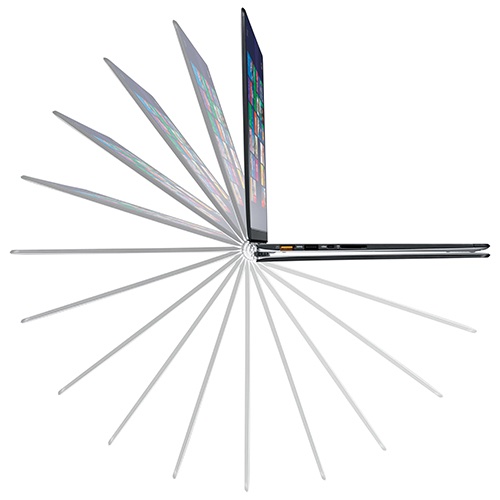
Putting Progress Into Perspective
History is fine, but not everyone needs to see the step-by-step progression that brought us from a PC stuffed into a suitcase in the 1980s to an Ultrabook today that performs at the level of many desktop PCs and weighs less than battery from one of those original “laptops.”
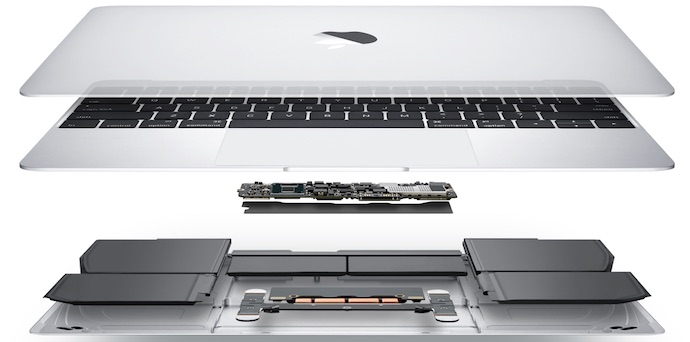
Sometimes seeing the difference in a comparison makes the point more effectively. So lets look at what a portable PC shopper circa 1985 could expect compared to someone today. For the purposes of this exercise, I’m looking at what today’s typical ultra-portable laptops offer (as opposed to entry level laptops).
|
Circa 1985 |
Current ultraportable laptop |
|
| Weight | 10+ kg | 1 kg range |
| Display | 9-inch monochrome CRT with 25 lines of text | 13-inch QHD LED display (many with touchscreen) |
| Motherboard/CPU | Full-sized motherboard with desktop CPU such as Intel 8088 @ 4.77 MHz | Highly customized motherboard with
mobile-optimized CPU such as Intel Broadwell Core i5 dual core @2.2 GHz |
|
RAM |
256K |
8 GB |
| Storage |
5-1/4-inch Floppy disk (360 KB capacity) |
256 GB SSD |
| Keyboard |
Full sized, detachable mechanical keyboard |
Full sized, backlit chiclet keyboard with built-in trackpad |
| Communications |
Optional built-in 4800 bps modem (phone jack required) |
802.11ac Gigabit Wi-Fi |
|
Battery Life |
None (early portables had no batteries) to 3-4 hour range |
All-day battery life |
1985 versus 2015. There’s been a lot of progress in laptops. These devices are not only less expensive and far more capable than ever, they are thin enough and light enough to challenge tablets in portability. That’s a long way from being a suitcase that’s too heavy to even carry on an airplane.

